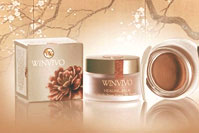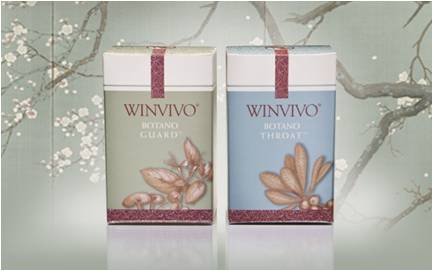Knowledge Garden
Health Concerns
Botanicals in our Products
 The earliest written records of nearly all civilizations mention the use of botanicals (vegetables and herbs) for healing. For over 3,000 years China preserved the written records of using plants for maintaining and promoting health and for healing various diseases, long before before the introduction of Western medicines in early twentieth century. In particular, a classic book on herbal usage and knowledge in China, Huangdi Neijing (translated as The Yellow Emperor's Classic of Internal Medicine), was created in the early Han period, between 2 and 3 thousand years ago.
The earliest written records of nearly all civilizations mention the use of botanicals (vegetables and herbs) for healing. For over 3,000 years China preserved the written records of using plants for maintaining and promoting health and for healing various diseases, long before before the introduction of Western medicines in early twentieth century. In particular, a classic book on herbal usage and knowledge in China, Huangdi Neijing (translated as The Yellow Emperor's Classic of Internal Medicine), was created in the early Han period, between 2 and 3 thousand years ago.
More than 1200 years ago, Japan was introduced to the practice of traditional Chinese medicine by physicians from Korea. Their adaptation, Kampo medicine, has since been integrated into Japan's national health care system. Other Asian countries have also been heavily influenced by China and Japan and adopted the traditional practice of using botanicals for health and healing. WinVivo combined this time tested traditional knowledge with modern scientific research data to create products that can help promote the health of you and your family.
Related Health Concern(s)
| Name | Description | Image |
Borneol resin (Dryobalanops aromatica) |
The dried resin of Dryobalanops aromatica is used in the preparation of the Healing Balm. Traditional Uses of Borneol resin (Dryobalanops aromatica) |
 |
Buddha Fruit (Momordica grosvenori) |
As a key ingredient included in our product Botano Throat™, Momordica grosvenori, also known as Siraitia grosvenorii, is an herbaceous perennia vine native to southern China and Northern Thailand and best known for its fruit, the luo han guo (which means Buddha fruit in Chinese), one of several that have been called longevity fruit. |
 |
Camellia Oil or Tea Seed Oil (Camellia Oleifera) |
The seeds of Camellia oleifera are pressed to yield camellia oil or tea seed oil. Traditional Uses of Camellia Oil or Tea Seed Oil (Camellia Oleifera) |
 |
Chameleon Plant (Houttuynia Cordada) |
Both the leaf and root of Chameleon plant are consumed as a vegetable in Vietnam and in Southwest China. Studies have demonstrated that this plant has broad-spectrum anti-viral, anti-inflammatory, and immune-stimulating properties. |
 |
Coptis root (Coptis chinensis Franch.) |
The dried rhizome of Coptis chinensis Franch is used in the preparation of the Healing Balm. Traditional Uses of Coptis Root
|
 |
Cordalis tuber (Corydalis turtschaninovii) |
The dried tubers of Corydalis turtschaninovii are used in the preparation of the Healing Balm. Traditional Uses of Cordalis tuber (Corydalis turtschaninovii) |
 |
Dragon’s Blood resin (Daemonorops draco) |
The red resin produced by the fruits of Daemonorops draco is used in the preparation of the Healing Balm. Traditional Uses of Dragon’s Blood resin (Daemonorops draco) |
 |
Fritillaria (Fritillaria cirrhosa) |
As a key ingredient included in Botano Throat™ and Healing Balm products, Fritillaria is the processed bulb of Fritillaria cirrhosa, a flowering plant in the Liliaceae family. Traditional Uses of Fritillaria (Fritillaria cirrhosa) |
 |
Ilex (Ilex Pubescens) |
An ingredient included in our product Botano Guard™, Ilex (Ilex pubescens) belongs to the family of holly plants. Both its root and leaf of ilex have been used in herbal remedies and consumed as tea for health maintenance in South East Asia. |
 |
Related FAQs


Privacy Policy | Disclaimer | Knowledge Garden Disclaimer | Return Policy | Contact Us | Affiliate Program
© 2009-2013 WinVivo Corporation All Rights Reserved



